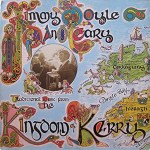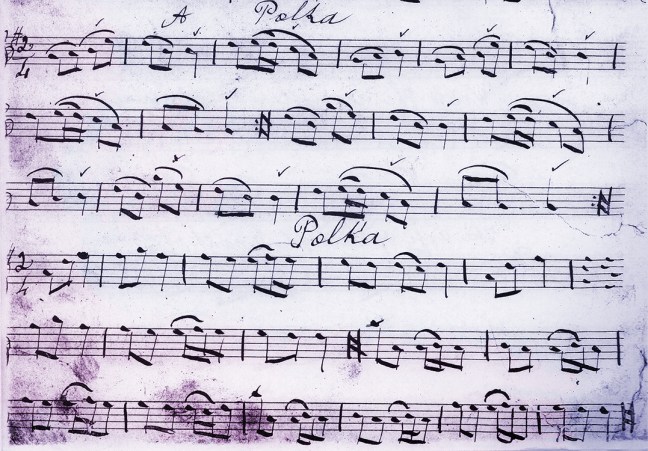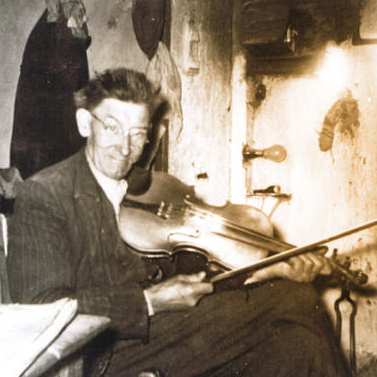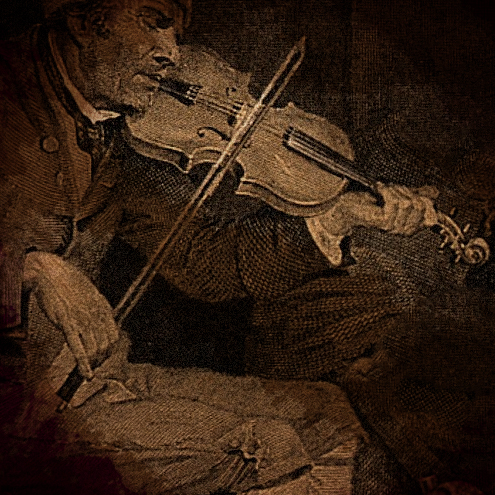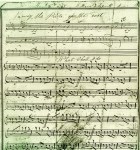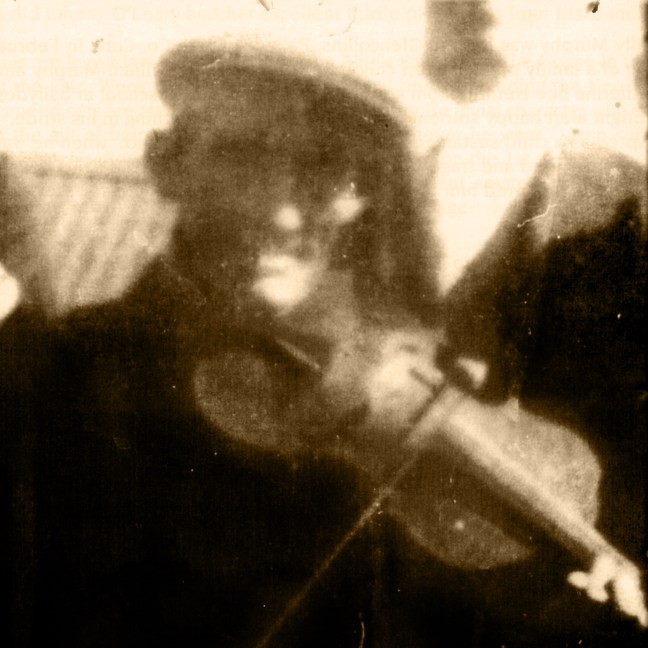Tom Billy Murphy (1879-1944), was one of 17 children. He was struck down by polio at the age of 13 years, following which he lost his sight and had only limited use of one leg and one arm. Tom Billy’s family were quite well off and could afford to support Tom, who was unable to earn a living by conventional means. The family owned a big house at Glencollins Upper, Ballydesmond, and Tom lived there all his life, contrary to the belief in some circles that he was a permanent itinerant.
He became a celebrated fiddle (and whistle) player and occupied his time by teaching pupils around the district. He was a near contemporary (and sometime rival) of Pádraig O’Keeffe. Tom Billy himself learned much of his repertoire from a travelling blind fiddle player named Taidhgin an Asail (aka Tadhg O Buachalla or Tadeen the Fiddler). Following Taidghin’s example, when making his rounds his form of transport was a saddled donkey, already unusual by this period, and he could rely on the animal to reach the destination after it had been shown the way a couple of times. Tom also had a keen sense of hearing and smell and it’s said he could identify people at long distances by their footsteps, or houses along the road by the smell of the smoke from their chimneys. He seems to have ranged quite widely as, for instance, he taught Maurice Leane of Annagh near Castleisland and Dan Leary of Kilcummin near Kilarney. Unable to write music he called out the notes by name and got the pupil to write them down. No recordings exist of his playing, but on the evidence of his pupils’ performances, it seems that he did not go in for a great deal of ornamentation most of the time and valued a strong rhythm and sweetness of tone. Through his breadth of distinct repertoire and facility for teaching, Tom Billy’s legacy is still with us today, and he is regarded as one of the very greats of Sliabh Luachra music.

Tom Billy Murphy with his pupil, Nora Mai Herlihy from Park in Knocknagree, and her mother

an example of his notation dictated to a pupil

the Murphy family of Glencollins Upper, Ballydesmond

Memorial stone in Ballydesmond

Tom Billy Murphy headstone in Ballydesmond cemetery
Learned from: Taidhgin an Asail
Taught: Dan O’Leary, “Lighthouse” Jack Connell, Johnny Mickey Barry, Molly Myers Murphy, Maurice Leane, Pete Bradley, Johnny (fiddle) O’Leary, Denis O’Keeffe, Art O’Keeffe, (possibly) Danny Ab O’Keeffe
Played with: Pádraig O’Keeffe, Din Tarrant
A few of the many tunes associated with Tom Billy



